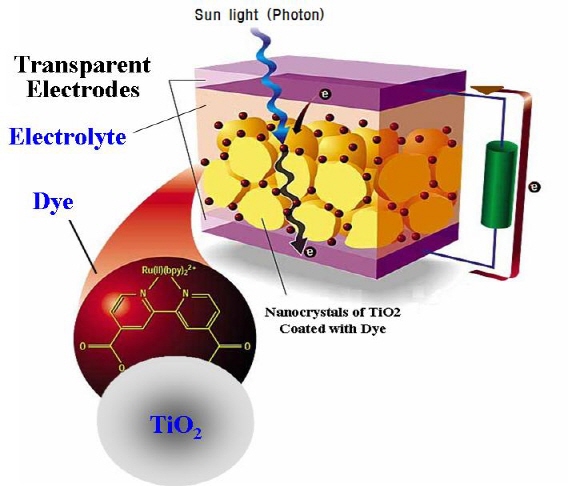
Kicking off with the front-runner Samsung GALAXY S II LTE which launched in September, Long Term Evolution (LTE) technology is now widely available to many mobile devices. However, extensive use of this blazingly fast device often drains away the power from the phone making it a useless gadget. Many times, it so happens that the phones need to be charged immediately but with no charging point available nearby. To solve this problem, advanced technology has been used in some cellphone designs that make them capable to power themselves with solar energy.
Photovolatics, which were once used almost exclusively in space to power satellites’ electrical systems, are being utilized more and more in less exotic ways and have been the substitute for fossil fuel. Although currently solar cells are not free from subsidy issues, still they hold their significance in that they are environmentally friendly and a source of sustainable energy. In this article, we will examine solar cells, especially dye-sensitized solar cell (DSSC) to learn how they convert the solar energy directly into electricity, and how they will change the future of the solar cell industry.
What is DSSC
DSSC is a low-cost solar cell generating electricity when photo-sensitized dye absorbs the sunlight and generates electrons. The principle of power generation of DSSC is very similar in many respects to photosynthesis of plants. DSSC’s materials are cheaper than existing semi-conductive solar cells and do not require elaborated process. Also, it is transparent and especially able to make various colored solar cells. Due to this characteristic, DSSC is expected to be suitable for building integrated photovoltaic solar cells in outer walls or glass windows of buildings.
Photovoltaic cells: converting photons to electrons
In a traditional solid-state semiconductor is made from two doped crystals, one doped with n-type semiconductor which has an excess of current-carrying electrons, each with a negative charge, and the other doped with p-type semiconductor, which adds additional holes. When an electron obtains enough energy to escape from its parent atom, it leaves behind a vacancy which may be filled by another electron. The vacancy is known as a hole which can be thought of as a second carrier of positive charge. Accordingly, when light, in the form of photons, hits solar cells, its energy breaks apart electron-hole pairs and excites electrons on the p-type side of the semiconductor, a process known as photoexcitation.
In silicon, sunlight can provide enough energy to push an electron out of the valence band (lower-energy region) into the conduction band (high-energy region). As the name implies, electrons in the conduction band are free to move about the silicon. When electrons get enough energy to be excited, these electrons will flow out from the p-type side into the n-type side. Losing energy while moving through the external circuit, they come back into the p-type material where they can re-combine again with the hole in valence band they left behind. In this way, sunlight creates an electrical current.
The principle of DSSC
Central to DSSC is a thick semiconductor nanoparticle film, which is called the electrode, which provides a large surface area for the absorption of light harvesting organic dye molecules. Sunlight passes through the transparent electrode into the dye layer where it can excite electrons that then flow into the TiO2. This process is accompanied by a charge transfer to the dye from an electron donor mediator, resetting the cycle. Currently, the recent researches focus on developing regular TiO2 layer in order to transfer electrons from dye to transparent electrode effectively, or substitute irregular mash-structured porous TiO2 layer with nanorod (nanoscale object range from 1~100 nm) shaped material with a large surface.
The future of DSSC
The DSSCs have made a huge impact on people not only because of various features like low cost, but also attractive designs and colors. They are light in weight. Indeed, there is no doubt that DSSCs have potential to revolutionize the solar cell industry. Despite any drawbacks, DSSCs will be a better solution for generating electricity without depleting fossil fuels.


